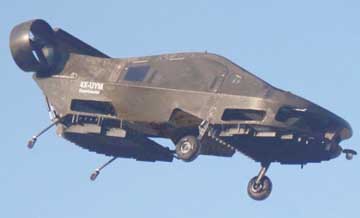
AP, Tel Aviv :
Spurred by technology advances and demand for transportation alternatives in increasingly congested cities, entrepreneurs around the globe are vying to become the first to develop a commercially viable “flying car.” The designs vary greatly, and most aren’t actually cars capable of driving on roads. Here are some examples:
European aircraft manufacturer Airbus is working at its Silicon Valley research center on a driverless flying taxi that at first will have a pilot, but will later be autonomous. The vertical takeoff-landing, all-electric aircraft is a cockpit mounted on a sled and flanked by propellers in front and back. Airbus plans to test a prototype before the end of 2017, and to have the first Vahanas ready for production by 2020.
Israeli tech firm Urban Aeronautics originally designed its people-carrying drone as an “air mule” for military use. It takes off vertically and has a standard helicopter engine, but no large main rotor. Its lift comes from two fans buried inside the fuselage. Two smaller ducted “fans” mounted in the rear provide forward movement. It can fly between buildings and below power lines, attain speeds up to 115 mph, stay aloft for an hour and carry up to 1,100 pounds
German technology company Lilium Aviation is working on a two-seater aircraft that will take off vertically using 36 electric fan engines arrayed along its wings.

